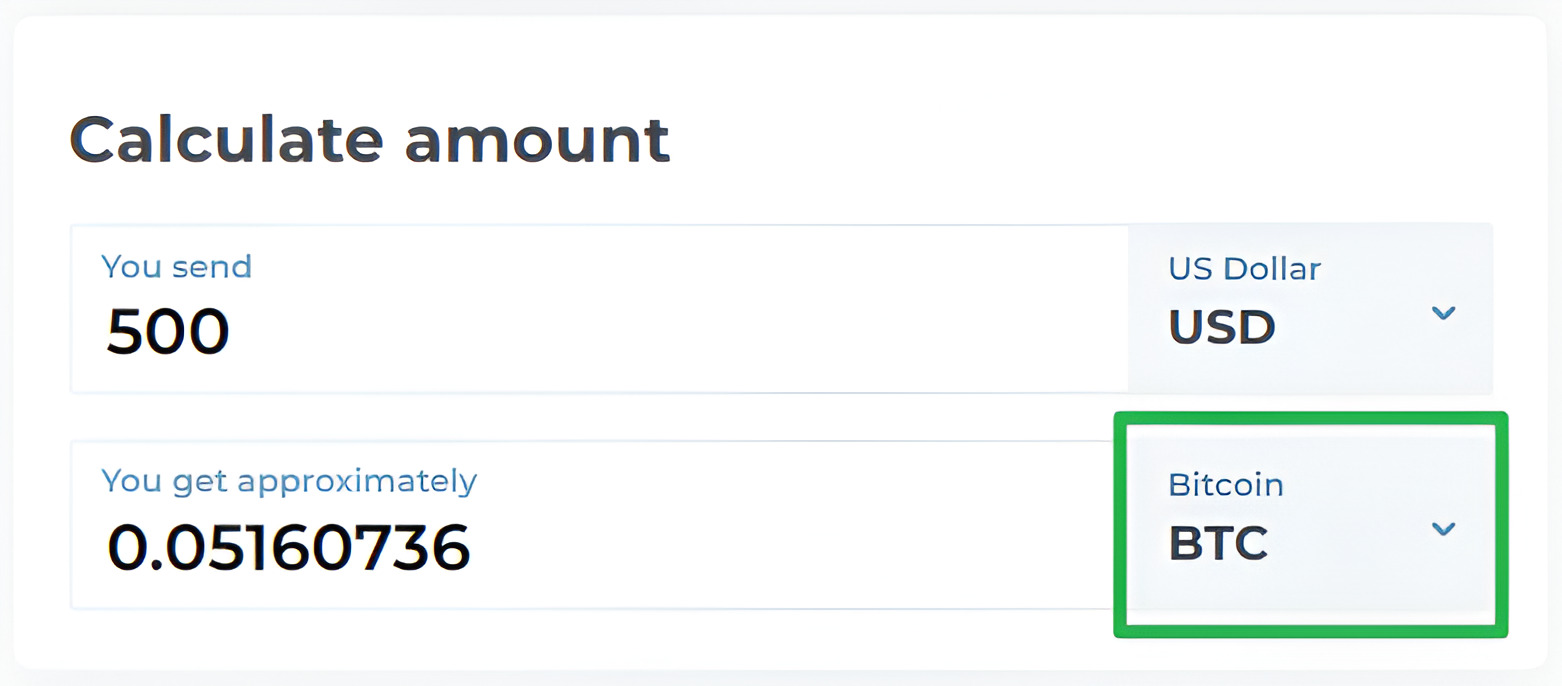Introduction
Bitcoin, the pioneer cryptocurrency, has gained significant attention and popularity since its inception. As a decentralized digital currency, Bitcoin has introduced a new paradigm in the world of finance and transactions. With its increasing adoption and use cases, many people wonder about the true worth of Bitcoin, particularly in terms of its value in fiat currencies such as the US dollar.
Bitcoin’s value is determined by a combination of factors, including supply and demand dynamics, market speculation, regulatory developments, and overall market sentiment. This article aims to explore the various aspects that influence the value of Bitcoin and delve into the concept of Bitcoin valuation. We will also discuss the historical performance of Bitcoin’s price and hypothesize potential future scenarios.
It is important to note that Bitcoin’s value can fluctuate drastically and is subject to extreme volatility. Therefore, any assessment of its worth should be approached with caution and acknowledged as a speculative exercise rather than a definite prediction.
By understanding the factors that shape Bitcoin’s value and analyzing its historical and potential future price trends, readers will gain a deeper insight into the worth of Bitcoin and its potential as a store of value or investment.
How Bitcoin Value is Measured
The value of Bitcoin is primarily measured in terms of its price against fiat currencies, most commonly the US dollar. The price of Bitcoin is determined by supply and demand dynamics within the cryptocurrency market. It is important to understand that Bitcoin’s value is subjective and can vary across different exchanges and trading platforms.
The price of Bitcoin is constantly changing and is typically displayed as the current spot price. This price is determined by a variety of factors, including the buying and selling activities of traders and investors, market sentiment, and macroeconomic developments.
Bitcoin’s value is also influenced by the liquidity of the market. As the market depth improves and trading volumes increase, the price of Bitcoin becomes more stable and less susceptible to manipulation. Conversely, in illiquid markets, even a small buy or sell order can have a significant impact on the price.
Bitcoin’s value is measured in denominations of Bitcoin itself, with the smallest unit known as a Satoshi. One Bitcoin is equivalent to 100 million Satoshis. This granular level of measurement allows for the flexibility of value representation, especially as the price of Bitcoin continues to rise.
It’s important to note that Bitcoin’s value is not solely determined by its price against fiat currencies. Bitcoin has also emerged as a valuable asset class and a store of value for many investors. Some measure Bitcoin’s value based on its market capitalization, which is the total value of all the Bitcoins in circulation. Market capitalization is calculated by multiplying the current price of Bitcoin by the total number of Bitcoins in existence.
Overall, the value of Bitcoin is determined by a complex interplay of supply and demand dynamics, market sentiment, investor confidence, and the overall health of the cryptocurrency ecosystem. Understanding these factors is crucial for assessing the true worth of Bitcoin and making informed decisions regarding its use and investment potential.
Understanding Supply and Demand for Bitcoin
Supply and demand are fundamental economic concepts that play a crucial role in determining the value of Bitcoin. The supply of Bitcoin is limited by its design, with a maximum supply cap of 21 million coins. This scarcity creates a sense of value and exclusivity, as the supply cannot be increased at will by any central authority or entity.
The demand for Bitcoin stems from various factors, including its potential as a decentralized currency, its use as a speculative investment, and its utility as a medium of exchange. The growing adoption of Bitcoin by merchants and businesses also contributes to increased demand, as it provides an alternative to traditional payment methods.
When there is a high demand for Bitcoin and limited supply available, the price of Bitcoin tends to rise. Conversely, when demand decreases or supply increases, the price of Bitcoin may experience a downward trend.
Market sentiment and investor psychology also play a significant role in shaping supply and demand dynamics. Positive news and developments in the cryptocurrency space can lead to increased demand, resulting in price appreciation. Similarly, negative events or regulatory uncertainties can dampen demand and have a downward impact on the price.
It’s important to note that the supply and demand for Bitcoin are influenced by factors beyond the cryptocurrency ecosystem. Macroeconomic conditions, geopolitical events, and monetary policies implemented by central banks can affect the perceived value of Bitcoin. In times of economic instability or inflationary pressures, Bitcoin is often seen as a hedge against traditional financial systems.
Understanding the intricate relationship between supply and demand for Bitcoin is essential for predicting price movements and assessing its value in the market. By staying informed about industry developments, monitoring market trends, and studying investor behavior, individuals can gain insights into the underlying dynamics that impact the supply and demand for Bitcoin.
Factors Influencing Bitcoin Price
The price of Bitcoin is influenced by a multitude of factors, ranging from market dynamics to external events. Understanding these factors can provide valuable insights into the potential direction of Bitcoin’s price. Here are some key factors that influence Bitcoin’s price:
1. Market Sentiment: The overall sentiment of investors and traders in the cryptocurrency market heavily impacts Bitcoin’s price. Positive news, such as regulatory approvals or institutional adoption, can drive up demand and result in a price increase. Conversely, negative events or regulatory crackdowns can lead to a decrease in demand and a decline in price.
2. Technological Developments: Improvements and innovations in Bitcoin’s underlying technology, such as scalability solutions or privacy enhancements, can positively impact Bitcoin’s price. These developments may attract more users, increase utility, and strengthen investor confidence in the cryptocurrency.
3. Regulatory Environment: Government regulations and legal frameworks surrounding Bitcoin can significantly influence its value. Favorable regulations, such as the recognition of Bitcoin as a legal form of payment, can boost adoption and investor confidence, leading to a price increase. Conversely, strict regulations or bans on Bitcoin can hinder its adoption and result in a decrease in price.
4. Market Manipulation: The cryptocurrency market is susceptible to manipulation due to its relatively low liquidity compared to traditional financial markets. Large holders of Bitcoin, known as “whales,” can exert influence through coordinated buying or selling, causing temporary market distortions and impacting Bitcoin’s price.
5. Macroeconomic Factors: Bitcoin’s price can be influenced by broader economic factors, such as inflation rates, currency devaluations, and global economic crises. In times of economic uncertainty, Bitcoin may be seen as a safe haven asset, attracting investors and driving up the price.
6. Media Coverage: Media coverage plays a significant role in shaping public perception and awareness of Bitcoin. Positive media coverage, highlighting its benefits and potential, can generate increased interest and demand, potentially leading to a price increase. Conversely, negative coverage or a lack of mainstream acceptance can deter new investors and suppress demand.
7. Competition: The presence of other cryptocurrencies and blockchain projects can impact Bitcoin’s price. If alternative cryptocurrencies offer superior features or gain significant adoption, it could divert some demand away from Bitcoin and impact its price negatively.
It’s important to note that these factors are interconnected, and their influences can vary over time. Analyzing and staying informed about these factors can help investors and traders make more informed decisions and better understand the dynamics of Bitcoin’s price movements.
Market Cap and Bitcoin Valuation
Market capitalization is a key metric used to gauge the valuation of cryptocurrencies, including Bitcoin. It provides a measure of the total value of a cryptocurrency based on its circulating supply and current market price. Bitcoin’s market cap is determined by multiplying the current price per Bitcoin by the total number of Bitcoins in circulation.
Market capitalization is an important indicator of the size and significance of a cryptocurrency within the broader market. As one of the leading cryptocurrencies, Bitcoin’s market cap is closely followed by investors, analysts, and enthusiasts.
Bitcoin has established itself as the largest cryptocurrency by market capitalization, often accounting for a significant portion of the total cryptocurrency market. The dominance of Bitcoin reflects its widespread adoption, recognition, and liquidity compared to other cryptocurrencies.
However, it’s important to note that market capitalization alone does not fully capture the value or potential of Bitcoin. Market cap represents the current perceived value of all Bitcoins in circulation, but it does not take into account factors such as future growth prospects, utility, and overall market sentiment.
Bitcoin’s market cap can be influenced by various factors, including price movements, fluctuations in supply and demand, and the overall performance of the cryptocurrency market. In times of increased market optimism and demand for cryptocurrencies, Bitcoin’s market cap tends to rise along with its price.
While market capitalization is a useful metric for understanding the relative size of different cryptocurrencies, it is important to consider other factors when evaluating the valuation of Bitcoin. These factors include its role as a decentralized digital currency, its potential as a store of value, its adoption rate, and its utility in real-world applications.
Ultimately, determining the true value of Bitcoin goes beyond market capitalization alone. It requires a comprehensive analysis of the various factors at play, including technological advancements, regulatory developments, macroeconomic conditions, and overall market sentiment.
By considering these factors along with market capitalization, investors and enthusiasts can gain a more holistic understanding of Bitcoin’s valuation and its potential as a transformative asset in the world of finance.
Bitcoin’s Historical Price Performance
Bitcoin’s history has been marked by remarkable price volatility, with significant price fluctuations occurring over the years. Understanding Bitcoin’s historical price performance can provide insights into its past trends and potential future price movements.
Bitcoin was first introduced in 2009, and for several years, its price remained relatively low. In the early days, Bitcoin traded for just a few cents, and it took several years for its price to start gaining significant traction. The price of Bitcoin experienced notable increases and decreases during this period, often driven by market speculation and limited liquidity.
One of the most significant milestones in Bitcoin’s price history occurred in 2017. During this year, Bitcoin experienced a historic bull run, with its price surging to all-time highs. In December 2017, Bitcoin reached a peak price of nearly $20,000 per coin, attracting immense media attention and widespread market interest.
However, following the 2017 bull run, Bitcoin’s price underwent a significant correction. Throughout 2018, the price steadily declined, reaching a low point of around $3,000. This period of price consolidation and correction was characterized by market uncertainty and regulatory concerns.
In the years following the 2018 correction, Bitcoin’s price gradually began to recover and stabilize. The price surpassed its previous all-time high in late 2020, reaching new record levels. The increased institutional adoption, the growing perception of Bitcoin as a store of value, and the macroeconomic environment influenced this price surge.
It’s important to note that Bitcoin’s historical price performance is characterized by periods of volatility and consolidation. The price is influenced by various factors, including market sentiment, regulatory developments, macroeconomic conditions, and investor behavior. As such, predicting Bitcoin’s future price movements based solely on historical performance can be challenging.
Furthermore, comparing Bitcoin’s price performance to traditional assets like stocks or commodities may not always provide accurate insights. Bitcoin operates in a unique market and has its own set of drivers and influences.
Investors and traders interested in Bitcoin should approach its historical price performance with caution and consider a range of factors, such as market trends, fundamental analysis, and overall market sentiment. It is important to conduct thorough research and exercise due diligence to make informed decisions when engaging with Bitcoin’s volatile and dynamic market.
The Concept of Satoshi
The concept of Satoshi is an integral part of understanding Bitcoin’s value and measurement. A Satoshi is the smallest unit of Bitcoin, named after its mysterious creator, Satoshi Nakamoto. Each Bitcoin can be divided into 100 million Satoshis, denoted as 0.00000001 BTC. This granular level of measurement allows for precise value representation and calculations.
The use of Satoshis facilitates transactions involving small amounts of Bitcoin and helps in dealing with the increasing value of Bitcoin over time. As the price of Bitcoin continues to rise, it becomes less practical to transact in whole Bitcoin units. Satoshis provide a way to transact in smaller increments, making it suitable for microtransactions and day-to-day use.
Additionally, by using Satoshis as a measurement, individuals can better visualize and understand the value of fractions of a Bitcoin. For example, if 1 Bitcoin is worth $30,000, one Satoshi would be equivalent to $0.0003.
The concept of Satoshi is not limited to transactional purposes. It also plays a fundamental role in discussions surrounding Bitcoin’s value and market capitalization. Bitcoin’s market capitalization is calculated by multiplying the price of one Bitcoin by the total number of Bitcoins in circulation, including all Satoshis.
Considering that the total supply of Bitcoin is capped at 21 million, the maximum number of Satoshis that can ever exist is 2.1 quadrillion. This limited supply, combined with its utility and growing adoption, contributes to Bitcoin’s perceived value and potential as a store of value.
The practicality and widespread adoption of Satoshis extend beyond the boundaries of the Bitcoin ecosystem. Several cryptocurrency-related websites, wallets, and exchanges use Satoshis as their standard unit of measurement, further cementing its importance in the broader digital currency landscape.
In summary, the concept of Satoshi represents the smallest unit of Bitcoin and enables precise measurement and value representation. Satoshis allow for convenient transactions involving smaller amounts of Bitcoin and contribute to the broader understanding of Bitcoin’s value, market capitalization, and usability.
How Much Is A Million Bitcoin Worth Today?
As of the most recent data available, the price of Bitcoin can fluctuate rapidly. Therefore, it is essential to check the current market price when calculating the value of a specific amount of Bitcoin, such as a million coins.
At the time of writing, let’s assume the price of Bitcoin is $40,000 per coin. To calculate the value of a million Bitcoin, we multiply the price per coin by the quantity of Bitcoin being considered:
$40,000 (price per Bitcoin) x 1,000,000 (quantity of Bitcoin) = $40 billion.
Therefore, in this hypothetical scenario, a million Bitcoin would be worth a staggering $40 billion.
It is important to note that this calculation represents the current value based on the assumed price and quantity. However, Bitcoin’s price is subject to constant fluctuations due to market conditions, investor sentiment, regulatory developments, and various other factors.
Additionally, it is worth mentioning that as the price of Bitcoin changes, so does the value of a million Bitcoin. Hence, it is crucial to stay updated with the latest market information if you wish to calculate the worth of a specific amount of Bitcoin accurately.
It is also worth noting that the value of Bitcoin is highly speculative and comes with inherent risks. Investors should conduct thorough research and exercise caution before making any investment decisions.
Furthermore, the hypothetical calculation above assumes a uniform price per coin. In reality, large-scale transactions involving a million Bitcoin could have a substantial impact on the market. Such transactions carry the risk of significantly moving the market price, potentially resulting in a higher or lower overall value.
Lastly, the worth of a million Bitcoin is significant, but it is important to consider the divisibility of Bitcoin into smaller units, such as Satoshis. Dividing Bitcoin into smaller units allows for more practical transactions and value representation, especially when dealing with fractions of a Bitcoin.
In summary, the value of a million Bitcoin is subject to change due to price fluctuations and market conditions. As of now, assuming a price of $40,000 per coin, a million Bitcoin would be worth $40 billion. However, it is essential to stay informed about the latest market price and factors affecting Bitcoin’s value to accurately calculate its worth.
Potential Future Bitcoin Price Scenarios
Forecasting the future price of Bitcoin is highly speculative and comes with considerable uncertainty. Numerous factors can influence the future price of Bitcoin, making it challenging to predict with certainty. However, it is possible to consider some potential scenarios that could impact Bitcoin’s price:
1. Increased Mainstream Adoption: If Bitcoin continues to gain widespread acceptance and more institutions, corporations, and individuals adopt it as a payment method or store of value, the increased demand could drive the price higher.
2. Regulatory Developments: Favorable regulatory frameworks that provide clarity and support to the cryptocurrency industry can boost investor confidence and foster greater adoption, potentially leading to a positive impact on Bitcoin’s price. Conversely, strict regulations or bans can negatively affect the price.
3. Technological Advancements: Continued advancements in Bitcoin’s underlying technology, such as scalability solutions or enhanced privacy features, can enhance its utility and attract more users. This increased adoption and functionality could positively influence the price.
4. Macroeconomic Factors: Bitcoin’s price can be influenced by macroeconomic conditions, such as inflation rates, global economic crises, or currency devaluations. During times of economic uncertainty, Bitcoin has been seen as a hedge against traditional financial systems, potentially resulting in increased demand and a positive price impact.
5. Competitive Landscape: The emergence of new cryptocurrencies or blockchain platforms with innovative features and improved scalability could pose a challenge to Bitcoin’s dominance. Increased competition and adoption of alternative cryptocurrencies may impact Bitcoin’s market share and potentially have an influence on its price.
6. Market Sentiment and Investor Behavior: The psychology of market participants and overall market sentiment can have a significant impact on Bitcoin’s price. Positive news, investor optimism, or widespread enthusiasm about the potential of Bitcoin can lead to increased demand and subsequent price appreciation. Conversely, negative news or market sentiment can result in a decline in price.
It’s important to note that these scenarios are speculative and based on current market dynamics. The future price of Bitcoin will depend on various unpredictable factors and unforeseen events. Therefore, caution must be exercised when considering any future price projections.
Investors and enthusiasts should conduct thorough research, seek professional advice, and closely monitor relevant factors influencing the cryptocurrency market to make informed decisions about Bitcoin and its potential price trajectory.
Conclusion
Bitcoin’s value and price are influenced by a multitude of factors, including supply and demand dynamics, market sentiment, technological advancements, regulatory developments, and overall market conditions. Understanding these factors is essential for assessing the potential worth of Bitcoin and making informed decisions about its use and investment potential.
While Bitcoin has shown significant price appreciation and market dominance since its inception, it is important to approach its valuation with caution. The volatility and unpredictability of Bitcoin’s price make it a high-risk investment, and investors should carefully consider their risk tolerance and conduct thorough research before engaging with the cryptocurrency.
Bitcoin’s historical performance indicates that its price can experience extreme volatility, including rapid price increases followed by significant corrections. Past performance is not indicative of future results, and predicting Bitcoin’s future price movements is challenging due to the complex interplay of various factors influencing its value.
As Bitcoin continues to evolve, its potential valuation may be influenced by mainstream adoption, regulatory developments, technological advancements, macroeconomic factors, and overall market sentiment. Continuous monitoring of these factors, along with comprehensive research and analysis, can provide valuable insights for evaluating Bitcoin’s potential future price scenarios.
Ultimately, while Bitcoin has garnered significant attention and interest, it is crucial to approach it with a balanced perspective and realistic expectations. Recognize the risks involved, stay informed about market developments, and make investment decisions based on individual circumstances and risk tolerance.
As the cryptocurrency landscape continues to evolve, Bitcoin’s value and worth will continue to be a topic of discussion and analysis. By staying informed and understanding the various factors that influence Bitcoin’s price, individuals can navigate the dynamic cryptocurrency market with greater confidence and knowledge.

























